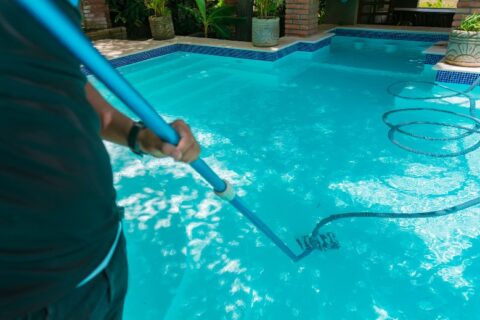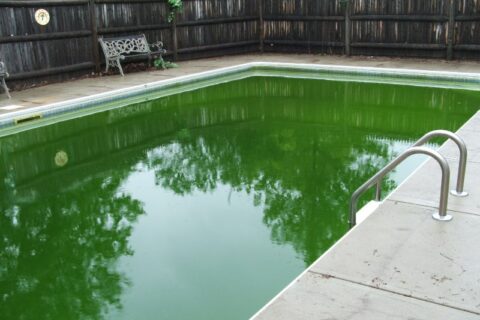7 Ways to Prevent Algae in Your Pool this Winter
Algae is the stuff of nightmares for pool owners, and in the warmer months it’s a constant threat. Unfortunately, even though warm weather helps this slimy stuff to flourish, it doesn’t take a break in the winter months- it just blooms more slowly. What to do? Follow these steps to keep algae from invading your pool in the winter.
- Take preventive measures. Before you close the pool for the winter, give it a good cleaning. Balance the chemicals, give it a shock, and apply an algaecide to stop algae before it starts.
- Keep it covered. Covering the pool is a good way to prevent algae growth. The right cover keeps algae from entering the pool, but it also keeps leaves, bugs, bacteria, and dirt from decomposing in the pool, providing algae with food. Go for a cover of woven solid vinyl for best results, to keep out not only debris but also sunlight, which is vital for the growth of algae.
- Make sure the cover is clean. Keeping leaves and debris off your pool cover will make it easier to open in the spring, but it also helps prevent algae in the winter. Left unattended, these things can disintegrate and wash around your cover when it rains.
- Balance the chemicals. When the chlorine levels drop, even a little bit, they leave the door open for an algae bloom. Check the chemical balance every two or three weeks, adjusting it to keep the pH between 7.2 and 7.6.
- Give it a shock. An occasional chlorine shock treatment is a great anti-algae strategy. If your water stays between 50-68°F, perform one shock every 3 weeks. Over 69°, do it every 1-2 weeks. When you shock it, run the filter for a few hours afterwards to distribute the chemicals evenly. If you’re using a solar cover, remove it before the shock treatment so the high chlorine won’t damage it.
- Keep the filter running- at least part of the time. A stagnant pool offers an inviting environment for algae, so run the filter every day. Two separate cycles of one hour a day are sufficient; setting your timer to run it at night will prevent overspending on peak energy rates.
- Pay attention. Taking a good look at your pool when you’re doing maintenance can help you spot early signs of algae, so you can attack it before it grows.
When you need someone to help with your pool, you can trust Millennium Pool Service. With over 30 combined years of experience in the pool industry, we provide a comprehensive range of services for customers in Virginia, Washington DC, and Maryland. When you hire Millennium Pool Service, you get a well-qualified, industry-trained staff, services tailored to your needs, and a commitment to 100% customer satisfaction. In Virginia, call 703. 939. 5062, in Maryland, call 301. 591. 3750, or contact us through our website.


